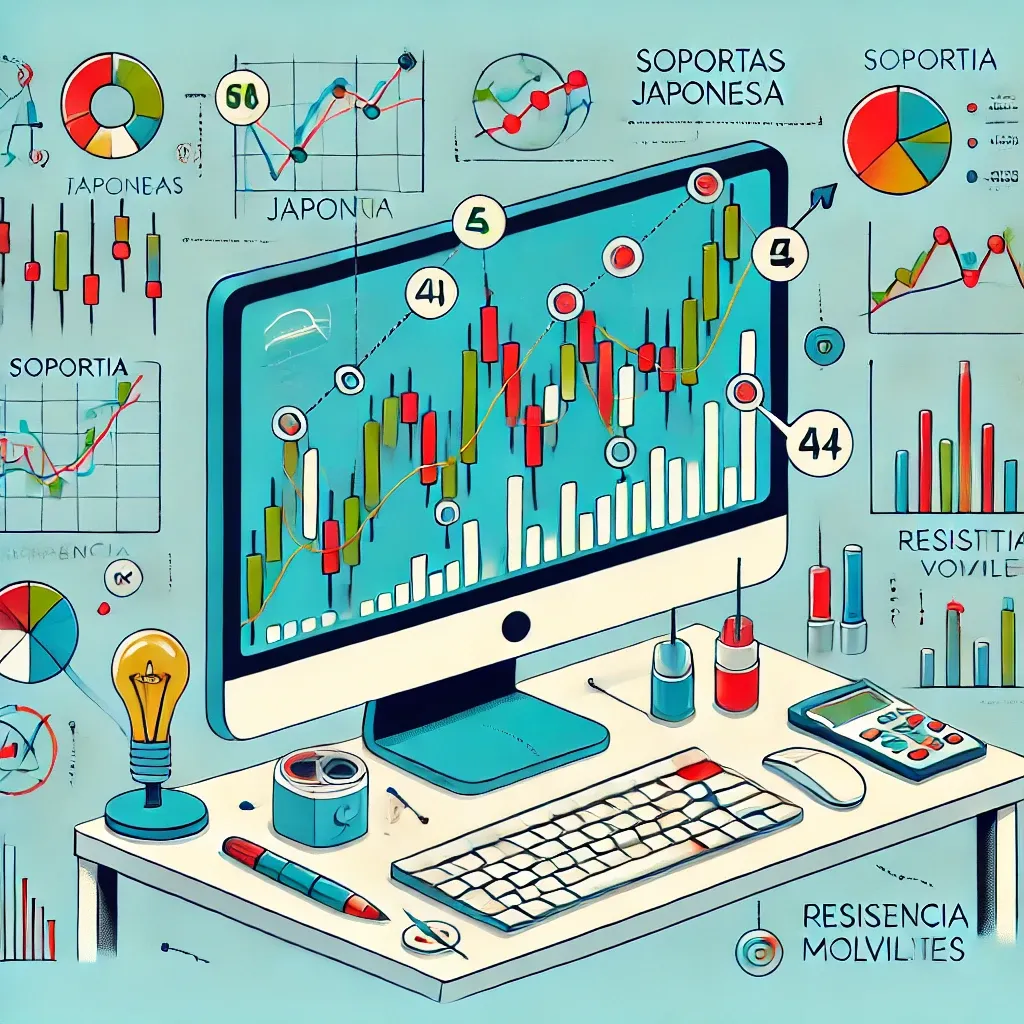Have you ever wondered how to predict the behavior of cryptocurrencies? Have you asked yourself what technical analysis is and how it can help you make informed investment decisions? If you're a beginner looking to learn about cryptocurrency technical analysis, you're in the right place! In this guide, we will explore the fundamental concepts, tools, and strategies you need to know to get started. Keep reading to discover how to navigate the world of technical analysis!
What is Cryptocurrency Technical Analysis?
Cryptocurrency technical analysis is a method used to evaluate the value of a cryptocurrency by analyzing its past market activity. Through charts and patterns, technical analysts attempt to predict future price movements.
Difference Between Technical Analysis and Fundamental Analysis
It's important to distinguish between technical analysis and fundamental analysis:
- Technical Analysis: Based on charts and historical price data. It looks for repeating patterns and uses indicators to forecast future movements.
- Fundamental Analysis: Focuses on external factors such as the technology behind the cryptocurrency, the development team, and market adoption.
Both approaches are useful, but technical analysis is especially popular among traders looking for short-term opportunities.
Essential Tools for Technical Analysis
To get started with cryptocurrency technical analysis, you'll need some key tools.
1. Price Charts
Charts are fundamental to technical analysis. They allow you to visualize price behavior over time. There are different types of charts:
- Line Chart: Displays the closing price of a cryptocurrency over a specific time period.
- Bar Chart: Indicates the opening, closing, high, and low prices over a set period.
- Candlestick Chart: Combines information from line and bar charts, providing more detail about price action.
2. Technical Indicators
Technical indicators are mathematical tools that analyze price and volume data. Some of the most commonly used indicators are:
- Moving Average (MA): Helps smooth price data and identify trends.
- Relative Strength Index (RSI): Measures the speed and change of price movements, helping to identify overbought or oversold conditions.
- Bollinger Bands: Show market volatility and help identify potential entry and exit points.
3. Analysis Platforms
There are several platforms where you can conduct your technical analysis. Some of the most popular include:
- TradingView: Offers advanced charts and an active trading community.
- Coinigy: Provides analysis and trading tools for multiple exchanges.
- Binance: In addition to being an exchange, it has integrated technical analysis tools.
Key Concepts in Technical Analysis
To conduct effective technical analysis, it's important to familiarize yourself with some key concepts.
1. Market Trends
Trends are the general direction of a cryptocurrency's price:
- Bullish Trend: When prices are rising.
- Bearish Trend: When prices are falling.
Sideways Trend: When prices move within a range without a clear direction.
2. Support and Resistance
These are key levels on price charts:
- Support: A level where the price tends to stop and bounce upwards. It acts like a "floor."
- Resistance: A level where the price tends to stop and reverse downwards. It acts like a "ceiling."
Identifying these levels is crucial for making buying and selling decisions.
3. Chart Patterns
Chart patterns are formations that prices follow and can help predict future movements. Some common patterns include:
- Head and Shoulders: Indicates a trend reversal.
- Triangles: Can signal a continuation or change in trend.
- Double Top/Double Bottom: Indicates potential reversal points.
Technical Analysis Strategies for Beginners
Now that you have a basic understanding of technical analysis, here are some strategies you can apply.
1. Start with the Trend
It's always advisable to trade in the direction of the trend. If the market is bullish, look for buying opportunities. If it's bearish, look for selling opportunities.
2. Use Combined Indicators
Don’t rely on a single indicator. Combine several to gain a clearer view of the market. For example, you could use the RSI along with moving averages to confirm your decisions.
3. Set Stop-Loss Levels
A stop-loss is an order that automatically closes your position if the price reaches a certain level. This will help you limit your losses if the market doesn't move in your favor.
4. Practice in a Simulated Environment
Before investing real money, consider practicing in a simulated environment. Many platforms offer demo accounts where you can test your strategies without risk.
How to Learn More About Technical Analysis
If you're determined to learn more about cryptocurrency technical analysis, here are some helpful tips:
1. Read Books and Online Resources
There are many books and articles that dive deeper into technical analysis. Look for recommended titles by experts in the field.
2. Join Trading Communities
Participating in online communities can be very helpful. You can learn from other traders, ask questions, and share experiences.
3. Take Online Courses
There are many online courses that teach technical analysis, some are free and others are paid. Be sure to choose one that matches your level of knowledge.
4. Attend Webinars and Conferences
Webinars and conferences are great for learning from professionals and getting practical advice. Many of these events are free and available online.
Conclusion
Cryptocurrency technical analysis is a valuable tool for any investor looking to better understand the market and make informed decisions. While it may seem complicated at first, with practice and dedication, you can master it.
Always remember to research and practice before making significant investments. Now that you have this beginner's guide, you’re ready to start your journey in the world of technical analysis! What strategies will you apply first? Your adventure in cryptocurrencies is just beginning!
